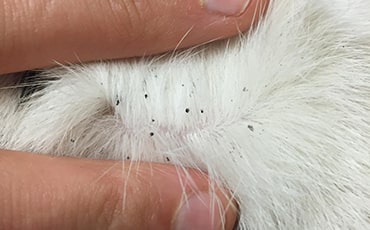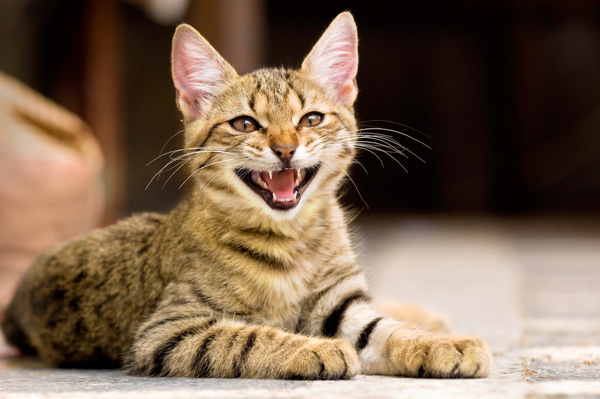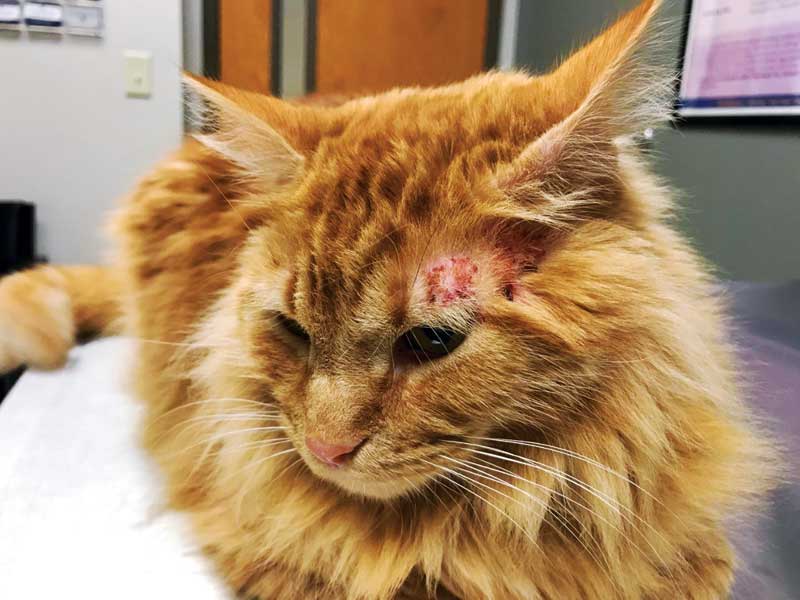If statistics by Cornell Feline Health Center is anything to go by, cats spend 30-50% of their day grooming themselves.
If self-cleaning was removed from the feline equation, cats would be miserable.
Kitties groom to stay clean, protect themselves from predators, cool down, relieve itchiness, distress, improve blood flow, and keep their fur in good health.
The feline body is strategic and perfectly equipped for grooming. The tongue has a rough surface to it while the teeth and paws are sharp for this reason among others.
While cats are passionate groomers, doing too much of it only indicates an underlying condition.
If your cat suddenly develops a bald spot or constantly pulls hair at the base of the tail, you should be concerned.
There are different reasons cats can exhibit the behavior. We have detailed them down below.
1. Flea Allergy

The most common reason cats pull fur on the base of their tails is because of a flea infestation.
Fleas trigger compulsive itching around a cat’s tail. These nasty bugs are quite smart. To increase their chances of survival, they will burrow in areas that are inaccessible to the kitty. What better spots than the spine and the base of the kitty’s tail? Your pet will have to work extra to eliminate bugs hiding in the said areas.
One funny thing with a flea infestation is that you may not see the actual bugs on your furball’s coat.
As aforementioned, cats are effective groomers. In most cases, they will pick out the fleas hiding in their coats and no matter how much you look for them, you will turn up empty.
According to the PDSA, some cats have an intense reaction to fleas. Even a single bite can trigger intense itching, a condition called flea allergic dermatitis (FAD).
FAD is stimulated when the kitty’s skin comes in contact with flea saliva.
Symptoms include intense itching, a rash, skin infections, and hair loss.
Even indoor cats can have a flea infestation especially if they hang out in balconies or interact with the dog.
Thankfully, FAD is treatable. First things first, you need an effective flea treatment to kill the fleas. However, that alone will only take care of the temporary problem.
For a wholesome solution, consider flea control services. You also want to keep a solid household cleaning routine to make it difficult for the bugs to survive in your space. The bulk of the fleas live in your home.
Finally, using a flea repellent on the kitty will protect him from being bitten in the future.
Related Post: How to Get Rid Of Fleas on Cats That Hate Water
2. Infection
A yeast infection on the tail can also cause itching and hair-pulling in cats. It is not very common in cats but it can occur.
If the infection is located at the base of the tail, expect your cat to bite, chew, scratch, and chew his tail endlessly.
3. Stress

Pets are creatures of routines. They thrive best when things stay the same day in day out.
So when the family moves to a new place or if a new pet joins the home, the resident kitty will not be very happy.
One way of relieving stress is, you guessed it, grooming.
Things like the arrival of a new baby, neighborhood cats, a dog, sickness, and being on heat can also trigger the same reaction.
Although most cats will lick their coats, others may pull hairs off of the skin.
To them, that may help take away the anxiety and make things bearable.
Related Posts:
Cat Depression After New Kitten: Does It Exist? (Plus How to Deal with It)
4. Localized Pain
Pain can also make your kitty pluck hair out of the base of the tail.
Perhaps the tail was caught under something that caused trauma.
Or maybe there is an infection under the skin leading to discomfort and pain.
To expose the abscess or wound (if any), the kitty will resort to hair pulling. This he does to have easy access to whatever is down there so he can clean it and hopefully lick the pain away.
5. Food And Environmental Allergies

Besides flea allergies, food and environmental allergies also play a part in cats pulling the fur at the base of their tails.
Like human beings, cats can be allergic to everyday things such as dust, laundry detergents, grass, air freshener, mold, and pollen. Others react negatively to specific foods.
If the allergy takes a toll on your kitty, it will trigger itching. What better way to relieve itching than to scratch chronically and pull out fur in the said area?
Cats will also rub their ears, nibble on their paws, and scratch the tail intensely. In the end, he may end up with bald spots in specific areas.
6. Ringworm
Also called feline dermatophytosis, ringworm is a common skin disorder among cats.
Ringworm is not a type of worm but rather a fungal infection that creates circular patches of itchy skin.
The fungi thrive by consuming keratin, the main component in nails and hair.
Cats often groom to get rid of the fungus or feel some relief from the itchiness.
Other times, it goes away on its own especially if there are other microorganisms.
In some cases, ringworm will put up shop without causing adverse reactions.
Closing Thoughts
A cat that pulls fur at the base of his tail is likely to have any of the aforementioned issues.
Since you may never know the true cause, you are better off taking the cat to the vet. They will carry out tests on the kitty and prescribe the best treatment plan for the problem.
Related Post:
Do Cats Have Bones In Their Tails?
Can Humans Get Ear Mites From Cats?

Hi! I am Eleanor Price. I started this website after my cat, Louie, almost died from a case of botulism (a type of food poisoning often caused by bacteria that grow on food items). Turned out that my cat’s diet was the problem. I have made it my duty to provide the best information and recommendations about everything cat lovers need to know about their felines’ health and wellbeing. My goal is to find the most informative content on anything feline-related and share it with fellow hardworking kitty lovers.

